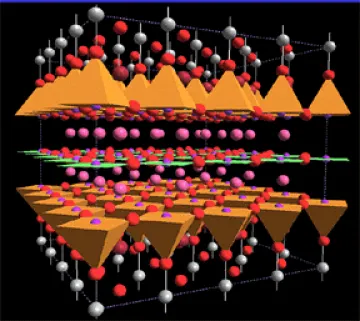
Condensed matter physics addresses cooperative phenomena involving large numbers of interacting particles. What began as a study of the properties of ordered solids (crystals) has now developed into a field with a strong multidisciplinary character in extending its scope to liquids, liquid crystals, surfaces, clusters, and also biological materials and organisms.
Condensed matter research at the University of Arizona spans such topics as superconductivity, nonlinear optics, ultra-small fabricated structures, organic semiconductors, electroluminscence, glasses, systems with quenched disorder, protein biophysics and polymer dynamics. This work is breaking down the boundaries
between physics and disciplines such as chemistry and biology. Current research further delves into the properties of electrons in metals, effects of scale on bulk material properties, self-organizing behavior of molecules at interfaces, of self-propelled objects, and biological nanomachines.
Experimental methods that we pursue include atomic force microscopy, fluid dynamics, electrochemistry, electron and optical microscopy, micromanipulation, high-speed imaging and fluorescence techniques. Our group has been recognized through international prizes, fellowships from the aps, an nsf Presidential Faculty Fellowship and a Sloan Fellowship.
Researchers
Faculty
Nikolay Golubev, Mohammed Hassan, Tai Kong, Andrei Lebed, Brian LeRoy, Srin Manne, Sumit Mazumdar, Arvinder Sandhu, John Schaibley, Charles Stafford, Koen Visscher, Weigang Wang, Shufeng Zhang



